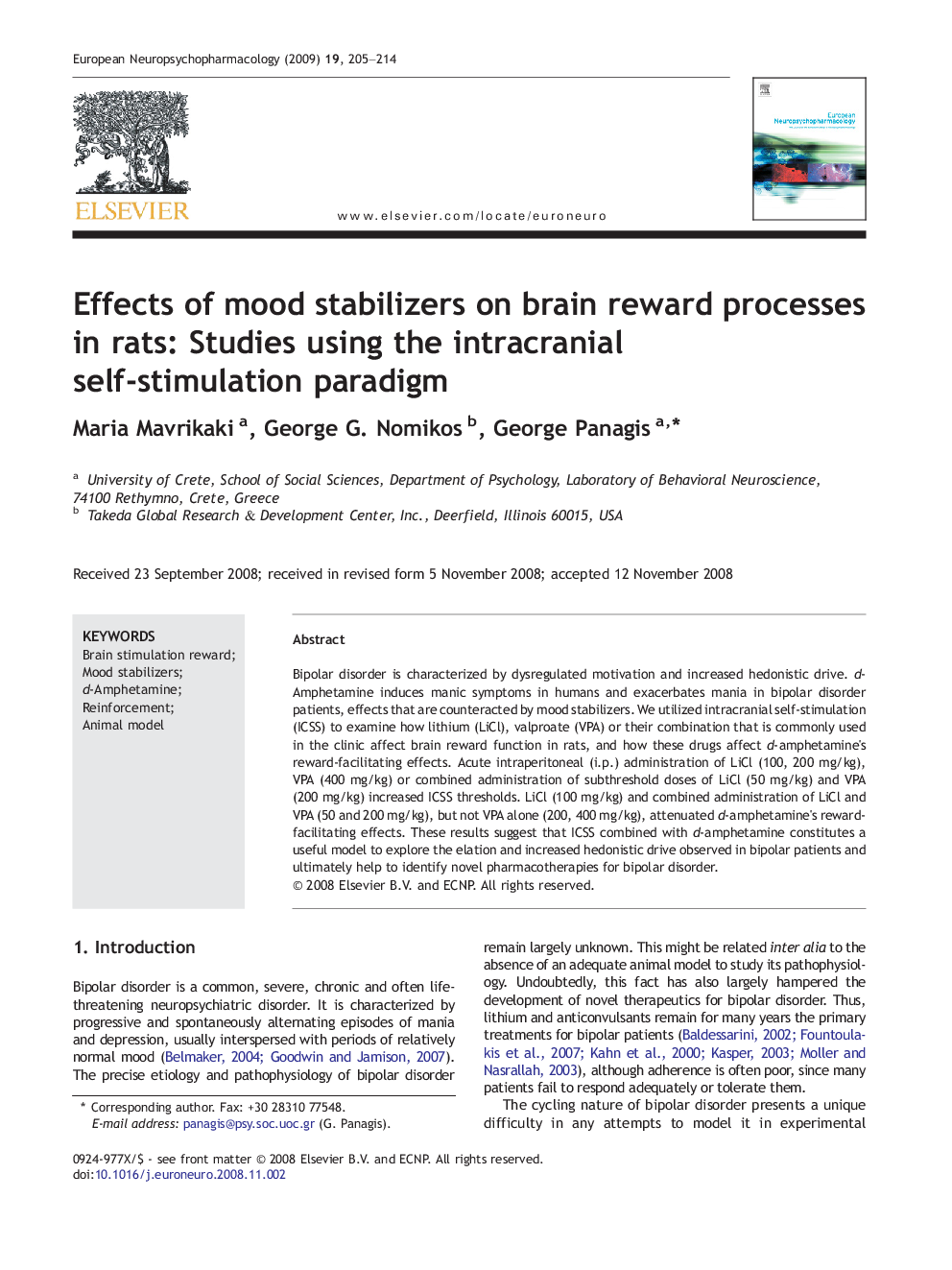| Article ID | Journal | Published Year | Pages | File Type |
|---|---|---|---|---|
| 319035 | European Neuropsychopharmacology | 2009 | 10 Pages |
Bipolar disorder is characterized by dysregulated motivation and increased hedonistic drive. d-Amphetamine induces manic symptoms in humans and exacerbates mania in bipolar disorder patients, effects that are counteracted by mood stabilizers. We utilized intracranial self-stimulation (ICSS) to examine how lithium (LiCl), valproate (VPA) or their combination that is commonly used in the clinic affect brain reward function in rats, and how these drugs affect d-amphetamine's reward-facilitating effects. Acute intraperitoneal (i.p.) administration of LiCl (100, 200 mg/kg), VPA (400 mg/kg) or combined administration of subthreshold doses of LiCl (50 mg/kg) and VPA (200 mg/kg) increased ICSS thresholds. LiCl (100 mg/kg) and combined administration of LiCl and VPA (50 and 200 mg/kg), but not VPA alone (200, 400 mg/kg), attenuated d-amphetamine's reward-facilitating effects. These results suggest that ICSS combined with d-amphetamine constitutes a useful model to explore the elation and increased hedonistic drive observed in bipolar patients and ultimately help to identify novel pharmacotherapies for bipolar disorder.
